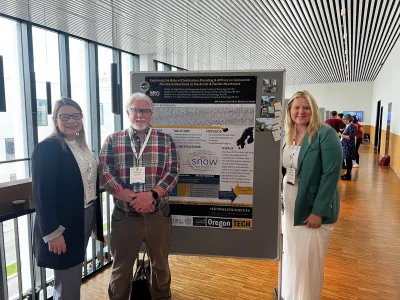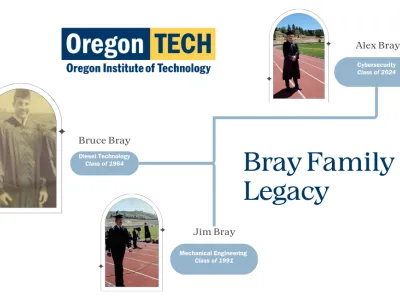Healthcare has lagged far behind other industries in the area of information technology. Two years ago, that meant the need for 50,000 new jobs as the industry sprinted to catch up. Through the HITECH Act, the federal government has thrown more than 30 billion dollars at schools and health providers for the adoption of and training for digital technologies. The result is more jobs than qualified candidates in Health Informatics.
Under the guidance of Dr. Michael Kirshner, Oregon Tech became one of the first universities in the country to create a bachelor’s degree program in Health Informatics. It was and continues to be the only one of its kind in Oregon. After graduating from the program, a student’s average starting salary is $78,000. Given the high demand for qualified candidates in the field, some students are hired before graduation.
“Employers love our graduates because they really are work-ready,” Kirshner says. The Oregon Tech program differentiates itself from other similar programs around the country through an emphasis on Information Technology.
With every device in a hospital or doctor’s office collecting data these days, more information is collected in one day than existed in all of the doctor’s offices in the world 10 years ago.Working with a combination of state and federal grants, Kirshner and his team forged a new kind of hands-on simulated learning environment for students to replicate real healthcare information technology issues.
Kirshner, who was formerly Medical Director for Health Informatics at Kaiser, brought a different perspective to the challenge of training students for a workplace made mercurial by the constantly changing demands of technological innovation.
“I went around to all of the major healthcare employers and asked them what they wanted, what was the skill set they needed?” Kirshner says. “That’s what helped guide the curriculum.”
Kirshner realized that hands-on experience was crucial to students landing jobs. At the same time, it was difficult to get that kind of experience without being hired in the field. The solution to that problem became one of the major factors to set Oregon Tech’s program apart.
“The program works with as many real organizations as possible, which I think is really helpful,” says Health Informatics student Phil Wikoff.
General Electric stepped up to the plate through its vendor in Tigard, HealthCo Information Systems. A relationship was born, and Oregon Tech has benefited from a grant for GE Centricity software.
About Oregon Tech
Founded in Klamath Falls in 1947, Oregon Institute of Technology is one of seven universities in the
Oregon University System, and the only public institute of technology in the Pacific Northwest. Oregon
Tech provides degree programs in engineering and health technologies, management, communication,
and applied sciences that prepare students to be effective participants in their professional, public, and
international communities through hands-on learning. Oregon Tech has a full-service, residential campus
in Klamath Falls and an urban, industry-focused campus in Wilsonville. Visit www.oit.edu to learn more
about Oregon Institute of Technology.
###








